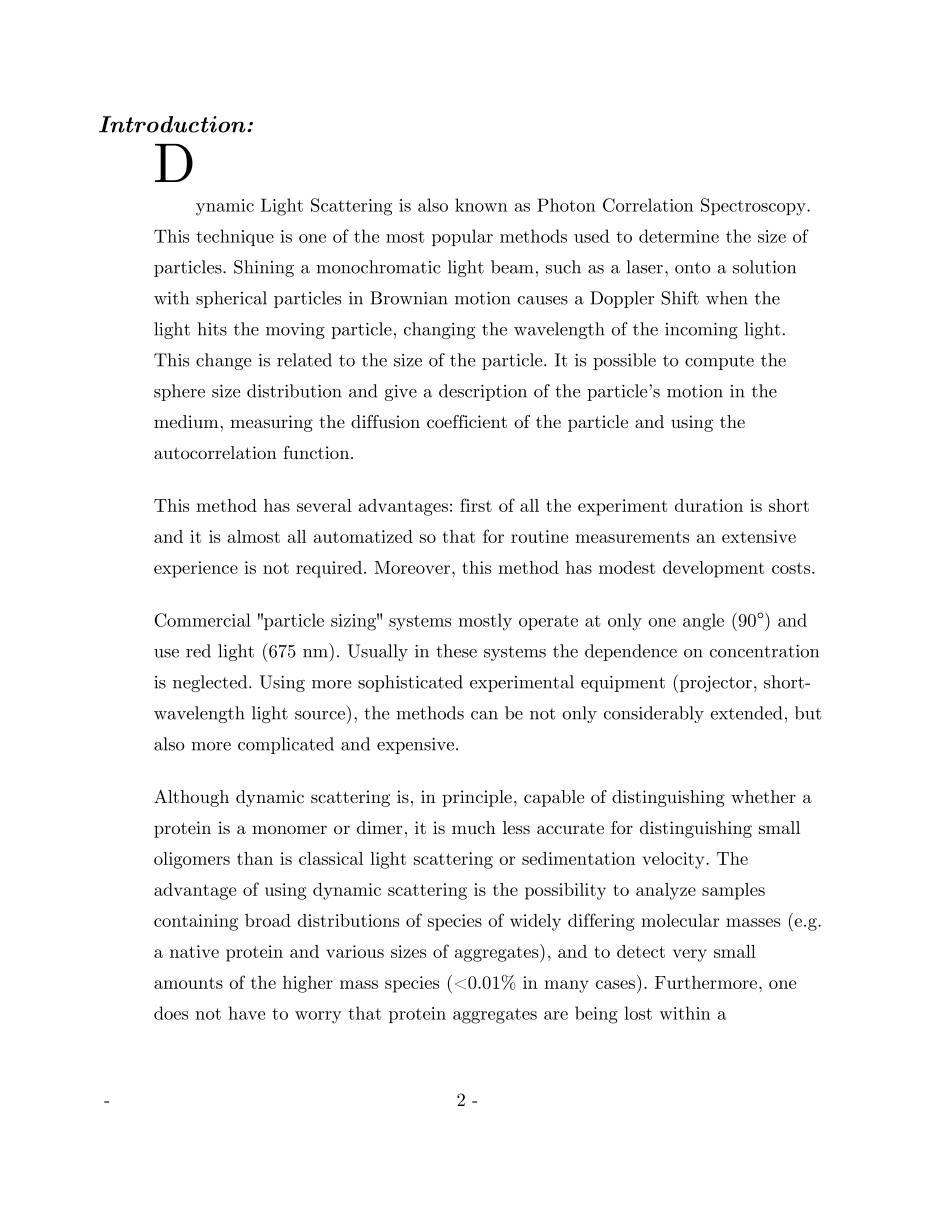University of California San Diego DYNAMIC LIGHT SCATTERING to determine the radius of small beads in Brownian motion in a solution. Author: Marta Sartor e-mail: msartor@ucsd.edu - 2 -Introdu ction: ynamic Light Scattering is also known as Photon Correlation Spectroscopy. This technique is one of the most popular methods used to determine the size of particles. Shining a monochromatic light beam, such as a laser, onto a solution with spherical particles in Brownian motion causes a Doppler Shift when the light hits the moving particle, changing the wavelength of the incoming light. This change is related to the size of the particle. It is possible to compute the sphere size distribution and give a description of the particle’s motion in the medium, measuring the diffusion coefficient of the particle and using the autocorrelation function. This method has several advantages: first of all the experiment duration is short and it is almost all automatized so that for routine measurements an extensive experience is not required. Moreover, this method has modest development costs. Commercial "particle sizing" systems mostly operate at only one angle (90°) and use red light (675 nm). Usually in these systems the dependence on concentration is neglected. Using more sophisticated experimental equipment (projector, short-wavelength light source), the methods can be not only considerably extended, but also more complicated and expensive. Although dynamic scattering is, in principle, capable of distinguishing whether a protein is a monomer or dimer, it is much less accurate for distinguishing small oligomers than is classical light scattering or sedimentation velocity. The advantage of using dynamic scattering is the...


